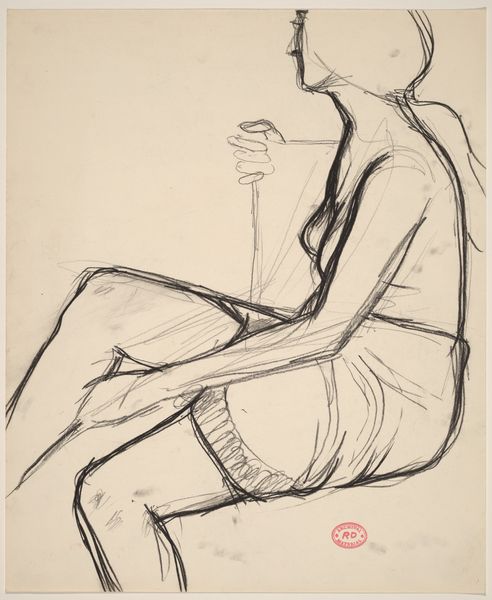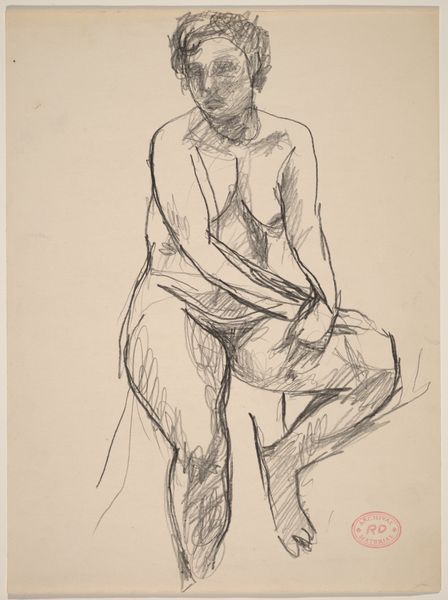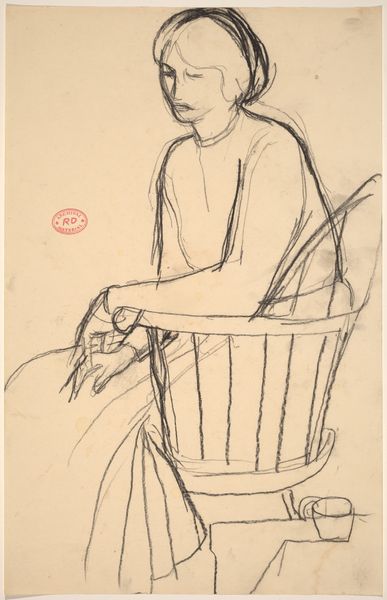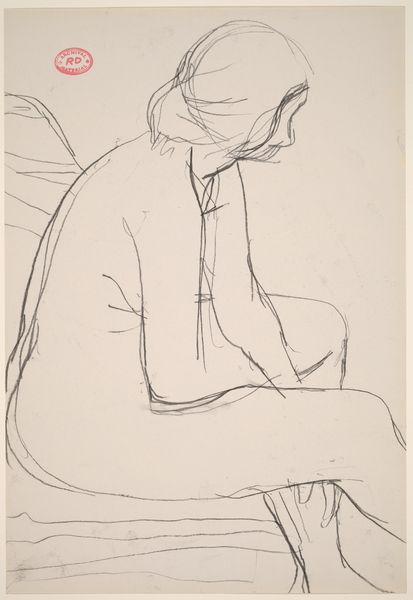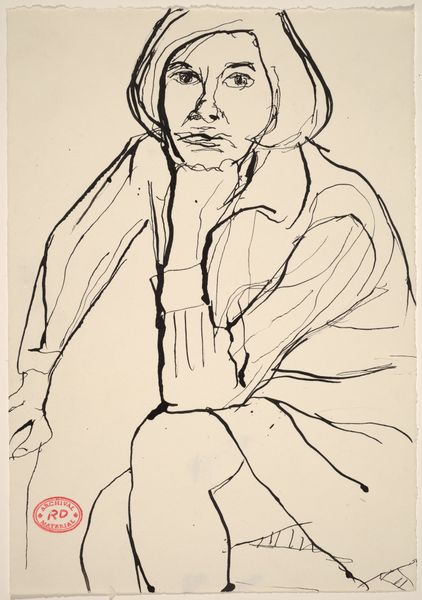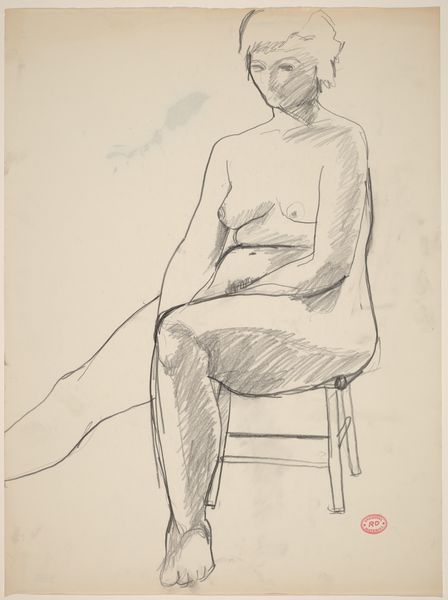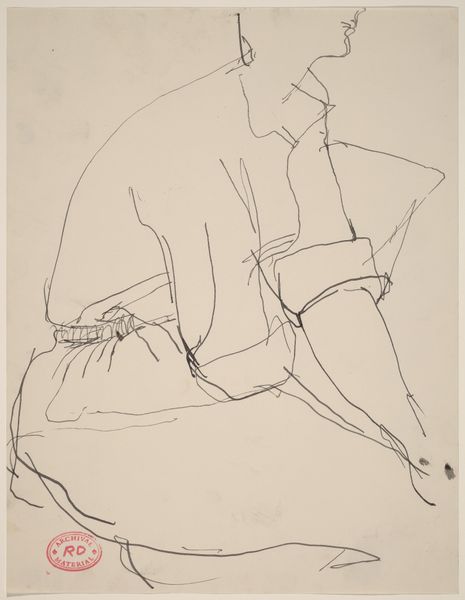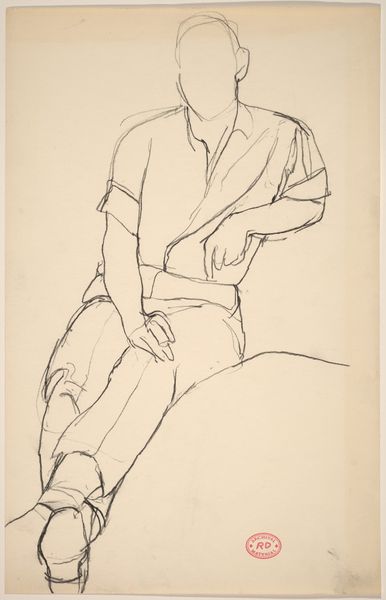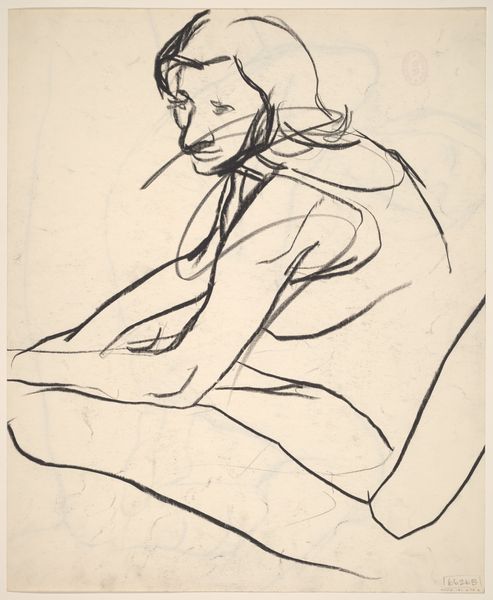![Untitled [seated female nude with crossed legs on draped stool] by Richard Diebenkorn](/_next/image?url=https%3A%2F%2Fd2w8kbdekdi1gv.cloudfront.net%2FeyJidWNrZXQiOiAiYXJ0ZXJhLWltYWdlcy1idWNrZXQiLCAia2V5IjogImFydHdvcmtzLzNlNDdhOTk5LTc2NDctNDE4Yi1hNzU5LTUzNmE5MDdhYzg5OC8zZTQ3YTk5OS03NjQ3LTQxOGItYTc1OS01MzZhOTA3YWM4OThfZnVsbC5qcGciLCAiZWRpdHMiOiB7InJlc2l6ZSI6IHsid2lkdGgiOiAxOTIwLCAiaGVpZ2h0IjogMTkyMCwgImZpdCI6ICJpbnNpZGUifX19&w=3840&q=75)
Untitled [seated female nude with crossed legs on draped stool] 1955 - 1967
0:00
0:00
drawing, pencil
#
portrait
#
drawing
#
contemporary
#
pencil sketch
#
figuration
#
bay-area-figurative-movement
#
pencil
#
portrait drawing
#
nude
Dimensions: overall: 43.2 x 34.9 cm (17 x 13 3/4 in.)
Copyright: National Gallery of Art: CC0 1.0
Curator: Welcome. Today, we’re looking at a work by Richard Diebenkorn, “Untitled [seated female nude with crossed legs on draped stool]". It's a pencil drawing, made sometime between 1955 and 1967. Editor: There's something melancholic about it. The loose lines create a sense of incompleteness, almost like a fleeting thought. The pose is casual, but there's a weight to her expression, or lack thereof. The figure seems unfinished, especially around her hair. It contributes to a strong overall effect, even though it looks rather unstudied. Curator: That sense of incompleteness is interesting in terms of its process. Diebenkorn often returned to the figure throughout his career, using drawing as a means to explore form and volume. This particular piece demonstrates that exploration very directly. Consider the lines – they reveal the artist's hand, his searching, his revisions. The paper becomes a record of the artistic labor itself. Editor: True. But even more interesting to me are the more concrete aspects, like the contrast of light and shadow achieved by the density and varying application of pencil marks. The modeling around the shoulders and thighs creates depth without any precise outlines. Curator: And we shouldn't forget the social context of figure drawing in that era. It was a practice deeply embedded in art education and a method employed for observation, yes, but the objectification inherent in these practices should not be discounted. Editor: While the artist’s intention and the traditions around creating nudes undoubtedly affects its creation and meaning, this one distinguishes itself in its composition and the effective rendering of depth. It encourages one to return for another glance. Curator: Definitely. This particular work gives us access not just to the final image, but the artistic process, the physical act of creation within its particular place and time, the mid-20th century. Editor: I suppose that the beauty here is in seeing the thought process manifest in a single glance. Curator: And seeing that process embedded in the material reality of the drawing itself. Editor: A process of light and shadow creating depth and ultimately mood.
Comments
No comments
Be the first to comment and join the conversation on the ultimate creative platform.
